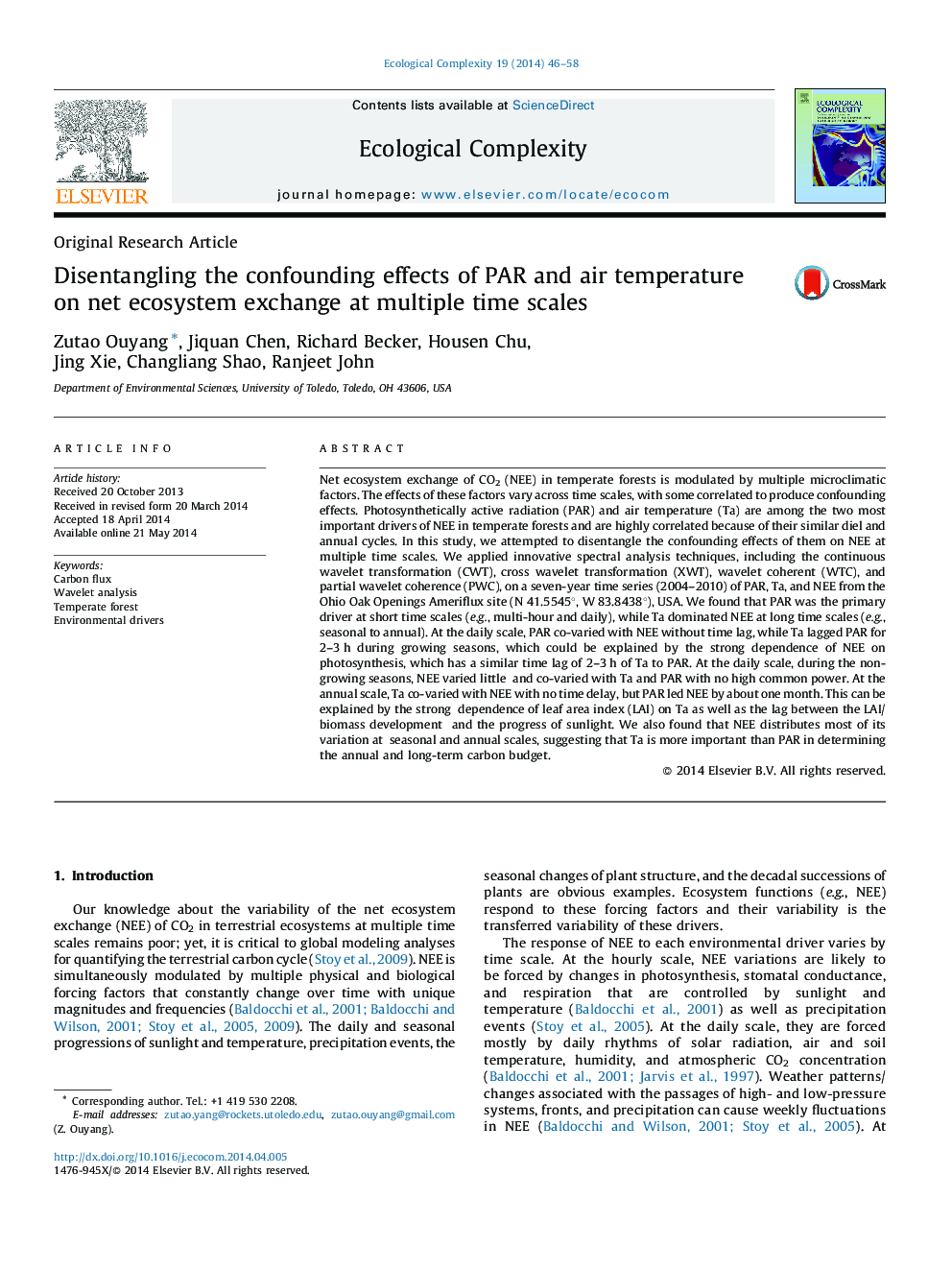| Article ID | Journal | Published Year | Pages | File Type |
|---|---|---|---|---|
| 4372437 | Ecological Complexity | 2014 | 13 Pages |
•We applied the newly developed partial wavelet coherence to ecological time series data.•Between PAR and Ta, PAR was the major driver for NEE at short scales from hours to a day, and Ta was the major driver for NEE at long scales (seasonal to annual).•At the daily scale, Ta lagged NEE 2–3 h and PAR did not lag NEE, while at the annual scale, Ta did not lag NEE but PAR led NEE by about 34 days.•Most of the variation of NEE happened at seasonal and annual scales, and significant variation at daily scales only in the growing seasons.
Net ecosystem exchange of CO2 (NEE) in temperate forests is modulated by multiple microclimatic factors. The effects of these factors vary across time scales, with some correlated to produce confounding effects. Photosynthetically active radiation (PAR) and air temperature (Ta) are among the two most important drivers of NEE in temperate forests and are highly correlated because of their similar diel and annual cycles. In this study, we attempted to disentangle the confounding effects of them on NEE at multiple time scales. We applied innovative spectral analysis techniques, including the continuous wavelet transformation (CWT), cross wavelet transformation (XWT), wavelet coherent (WTC), and partial wavelet coherence (PWC), on a seven-year time series (2004–2010) of PAR, Ta, and NEE from the Ohio Oak Openings Ameriflux site (N 41.5545°, W 83.8438°), USA. We found that PAR was the primary driver at short time scales (e.g., multi-hour and daily), while Ta dominated NEE at long time scales (e.g., seasonal to annual). At the daily scale, PAR co-varied with NEE without time lag, while Ta lagged PAR for 2–3 h during growing seasons, which could be explained by the strong dependence of NEE on photosynthesis, which has a similar time lag of 2–3 h of Ta to PAR. At the daily scale, during the non-growing seasons, NEE varied little and co-varied with Ta and PAR with no high common power. At the annual scale, Ta co-varied with NEE with no time delay, but PAR led NEE by about one month. This can be explained by the strong dependence of leaf area index (LAI) on Ta as well as the lag between the LAI/biomass development and the progress of sunlight. We also found that NEE distributes most of its variation at seasonal and annual scales, suggesting that Ta is more important than PAR in determining the annual and long-term carbon budget.
